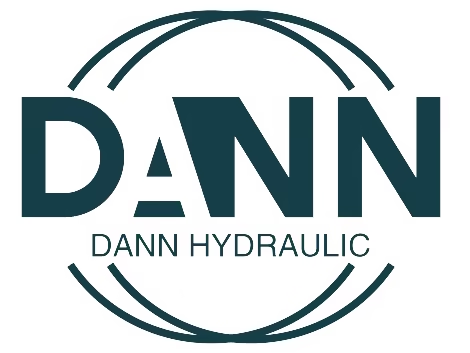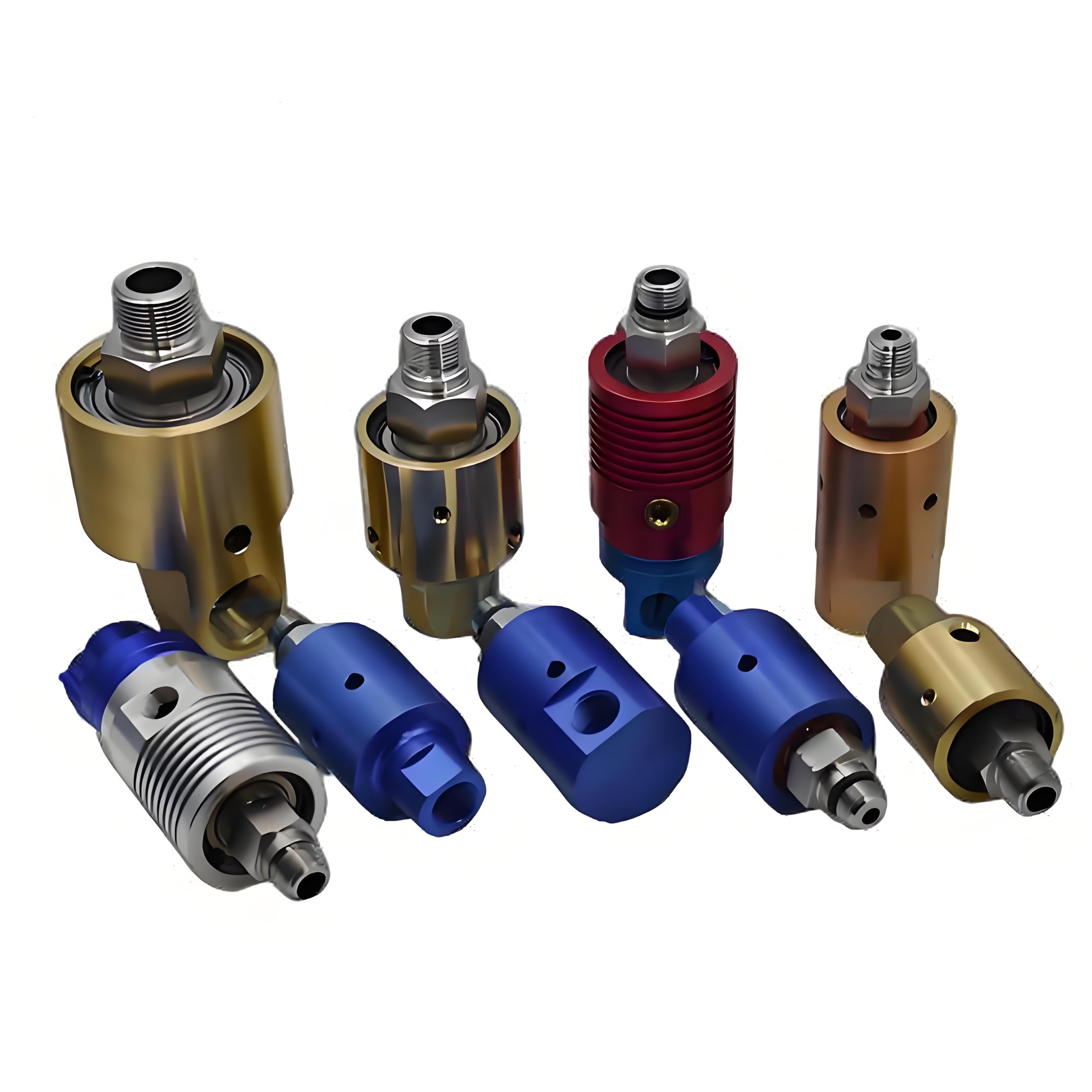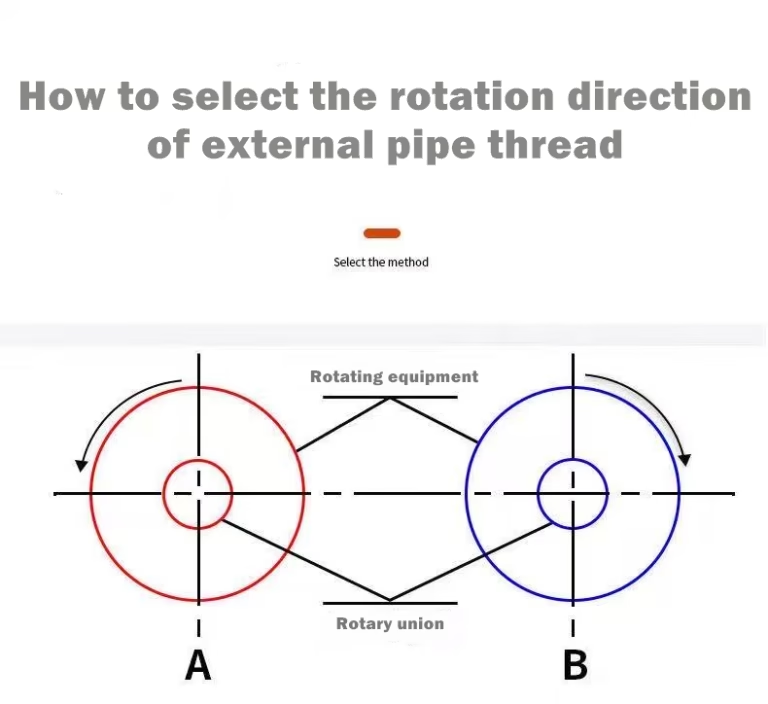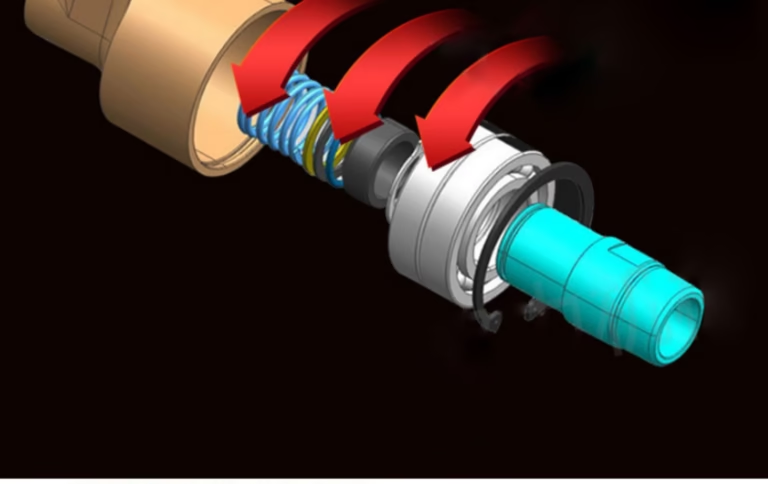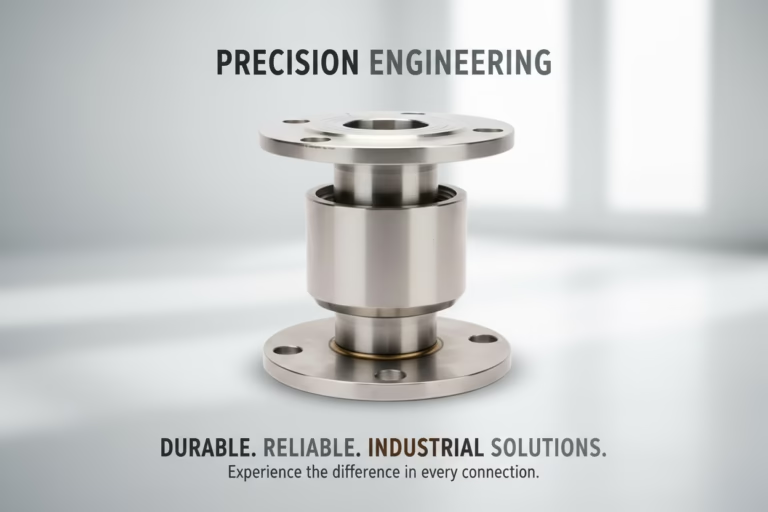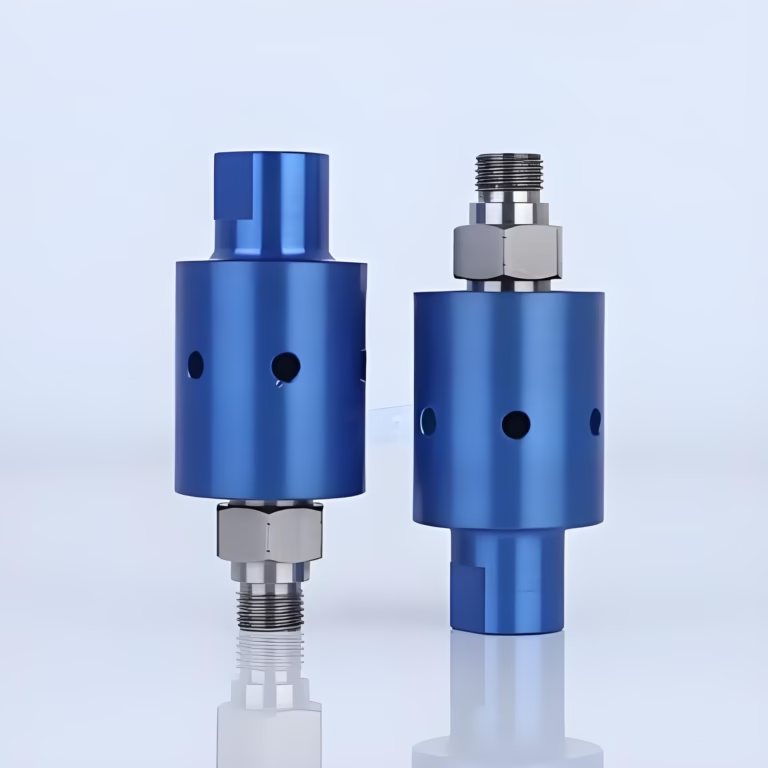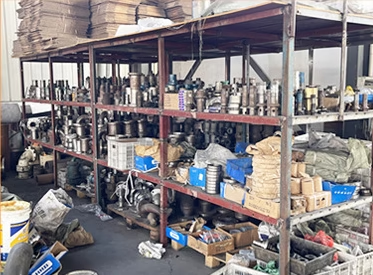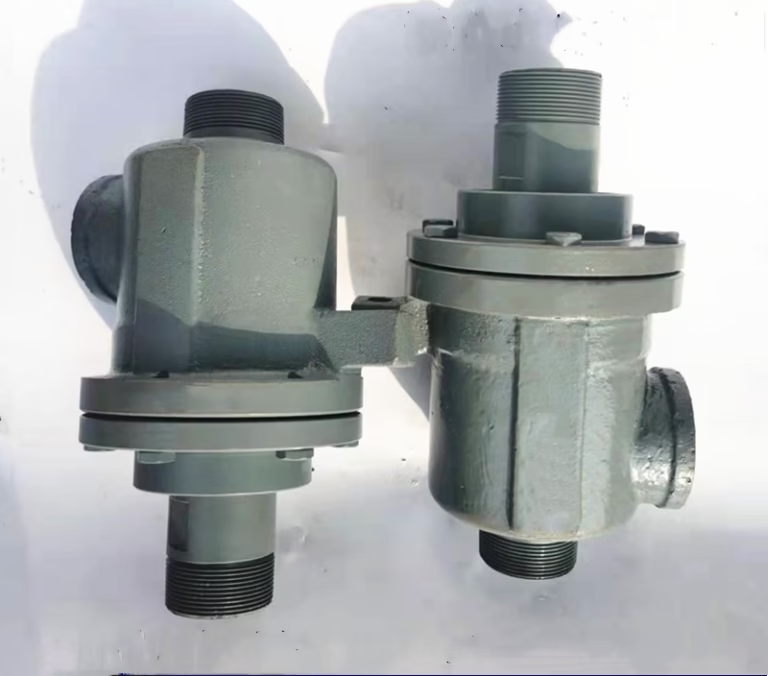specific rotary union parts
Introduction
In the intricate landscape of industrial machinery, rotary unions play a crucial yet often overlooked role. These unassuming components are the linchpins that enable the seamless transfer of fluids, gases, and even electrical power between stationary and rotating parts of various machines. In this blog, we will embark on a detailed exploration of five specific types of rotary unions. Calender Machine rotary union, Extruder rotary union, Drying Machine rotary union, Slag Cooler rotary union, and Pneumatic Punch Clutch rotary union. By understanding their unique characteristics, applications, and benefits. You’ll gain valuable insights into how these rotary unions contribute to the efficient and reliable operation of industrial processes.
Calender Machine Rotary Union: Precision and Consistency in Material Processing
Calender machines are widely used in industries such as rubber, plastics, and paper manufacturing. These machines work by passing materials between a series of heated rolls to achieve a specific thickness, shape, and surface finish. The Calender Machine rotary union is an essential component that facilitates the transfer of heat-conducting fluids. Such as thermal oil or steam, apply to the heated rolls.
How it Works
The Calender Machine rotary union is for maintaining a leak-free connection while the rolls rotate at high speeds. It typically consists of a stationary housing connected to the fluid supply lines and a rotating shaft that interfaces with the roll. High-quality seals, often made from materials like PTFE or fluorocarbon elastomers, ensure that the fluid remains contained within the union and efficiently transfers to the roll.
For example, in a rubber calender machine, the rotary union delivers hot thermal oil to the rolls. Heating them to the required temperature. This precise temperature control is crucial for softening the rubber compound, allowing it to be shaped accurately between the rolls. Without a reliable Calender Machine rotary union. Temperature variations could lead to inconsistent material thickness and surface defects, ultimately affecting the quality of the final product.
Key Features
High-Temperature Resistance:
Calender machines often operate at elevated temperatures, and the rotary union must be able to withstand these conditions without degradation. Many Calender Machine rotary unions handle temperatures ranging from 200°C to 350°C, ensuring continuous and reliable performance.
Precision Engineering:
To achieve the tight tolerances required in material processing, calendar machine rotary unions with extreme precision. The internal components are exacting standards, minimizing friction, and ensuring smooth rotation. Which in turn contributes to the uniformity of the processed material.
Leak-Proof Design:
Even a small leak in the rotary union can disrupt the production process and lead to material waste. Advanced sealing technologies create a hermetic seal, preventing any leakage of the heat-conducting fluid.
Extruder Rotary Union: Enabling Continuous and Efficient Extrusion Processes
Extrusion is a fundamental process in the plastics, food, and chemical industries. Where raw materials are melted and forced through a die to create products with a continuous cross-sectional profile. The Extruder rotary union plays a vital role in this process by facilitating the transfer of cooling water, hydraulic oil, or other fluids to different parts of the extruder.
Role in Extrusion
In an extruder, the screw rotates within the barrel to convey, melt, and mix the raw material. The Extruder rotary union is responsible for supplying cooling water to the barrel to control the temperature of the melting process. Proper temperature control is essential to ensure that the material melts uniformly and that the extruded product has the desired properties.
For instance, in a plastic extruder, if the temperature of the barrel is too high. The plastic may degrade, resulting in a lower-quality product. On the other hand, if the temperature is too low. The plastic may not melt properly, causing blockages and production interruptions. The Extruder rotary union ensures a consistent flow of cooling water, maintaining the optimal temperature for the extrusion process.
Distinctive Characteristics
High-Pressure Capability:
Extrusion processes often involve high pressures as the material is forced through the die. Extruder rotary unions can withstand these high-pressure conditions, typically up to several hundred bars. This allows for reliable fluid transfer even under the most demanding operating scenarios.
Corrosion Resistance:
Depending on the type of material being extruded, the fluids used in the extruder may be corrosive. Extruder rotary unions with corrosion-resistant materials. Such as stainless steel or nickel-based alloys to ensure long-term durability and performance.
Versatility:
These rotary unions can handle a variety of fluids, including water, oil, and chemicals. This versatility makes them suitable for a wide range of extrusion applications. From manufacturing plastic pipes to producing food products like pasta.
Drying Machine Rotary Union: Optimizing Drying Efficiency
Drying machines are used across numerous industries, including textiles, pharmaceuticals, and agriculture, to remove moisture from products. The Drying Machine rotary union is an integral part of these machines. Enabling the transfer of hot air, steam, or other drying media to the rotating drum or chamber.
Function in Drying
In a typical drying machine. The Drying Machine rotary union connects the stationary supply lines of the drying medium to the rotating part of the machine. As the drum or chamber rotates. The rotary union ensures a continuous and even distribution of the drying medium, maximizing the drying efficiency.
For example, in a textile drying machine, steam often as the drying medium. The Drying Machine rotary union delivers the steam to the interior of the rotating drum. Where it comes into contact with the wet textiles. The uniform distribution of steam ensures that the textiles dry evenly, reducing the risk of shrinkage or damage.
Important Attributes
High-Flow Capacity:
To achieve efficient drying, a large volume of drying medium needs transfer. Drying Machine rotary unions are designed with high-flow channels to accommodate the required flow rates of hot air, steam, or other media. This ensures that the drying process is completed promptly, increasing productivity.
Thermal Insulation:
In some drying applications, maintaining the temperature of the drying medium is crucial. Drying Machine rotary unions may incorporate thermal insulation features to minimize heat loss during the transfer process. This helps to conserve energy and ensures that the drying medium reaches the product at the optimal temperature.
Easy Maintenance:
Drying machines often operate in dusty or dirty environments. This can lead to the accumulation of debris in the rotary union. Drying Machine rotary unions with ease of maintenance in mind. Featuring accessible components and seals that can quickly replace or clean to keep the machine running smoothly.
Slag Cooler Rotary Union: Handling Harsh Conditions in Industrial Processes
Slag coolers in industries such as steelmaking and power generation to cool and solidify the molten slag produced during the manufacturing process. The Slag Cooler rotary union faces extremely harsh operating conditions, including high temperatures, abrasive materials, and heavy loads.
Challenges and Solutions
The molten slag can reach temperatures of over 1500°C, and the Slag Cooler rotary union must be able to withstand these extreme heat conditions while maintaining its integrity. Additionally, the slag contains abrasive particles that can wear down the internal components of the rotary union over time.
To address these challenges, Slag Cooler rotary unions with high-temperature-resistant materials such as refractory metals and ceramics. Specialized seals and bearings prevent leakage and ensure smooth rotation, even in the presence of abrasive materials. For example, some Slag Cooler rotary unions feature tungsten-carbide-coated seals that offer excellent wear resistance.
Key Performance Features
Extreme Temperature Resistance:
As mentioned, Slag Cooler rotary unions can operate in high-temperature environments. They can withstand continuous exposure to temperatures well above 1000°C, ensuring reliable performance in the most demanding slag-cooling applications.
Abrasion Resistance:
The ability to resist abrasion is crucial for the longevity of the Slag Cooler rotary union. Advanced materials and surface treatments are employed to enhance the abrasion resistance of the internal components, reducing the need for frequent replacements.
High-Load Capacity:
Slag coolers often operate under heavy loads, and the rotary union must be able to support these loads without failure. Use robust construction and high-strength materials to ensure that the Slag Cooler rotary union can handle the mechanical stresses associated with the operation of the slag cooler.
Pneumatic Punch Clutch Rotary Union: Precision and Power in Punching Operations
Pneumatic punch clutches commonly in metalworking industries, such as stamping and sheet metal fabrication, to transfer power and control the operation of the punch press. The Pneumatic Punch Clutch rotary union is responsible for the transfer of compressed air to the clutch, enabling precise control over the punching process.
Operation in Punching
When compressed air is supplied to the Pneumatic Punch Clutch through the rotary union, it activates the clutch, engaging the punch press and allowing it to perform the punching operation. The precise control of the compressed air flow is essential for achieving accurate and repeatable punching results.
For example, in a sheet-metal stamping operation, the Pneumatic Punch Clutch rotary union ensures that the correct amount of compressed air is delivered to the clutch at the right time. This allows for the precise positioning of the punch and die, resulting in high-quality stamped parts with tight tolerances.
Special Features
High-Speed Compatibility:
Pneumatic punch presses often operate at high speeds, and the Pneumatic Punch Clutch rotary union must be able to keep up. These rotary unions are for handling high-speed rotations without sacrificing the integrity of the compressed air transfer, ensuring smooth and efficient punching operations.
Low-Friction Design:
To minimize energy losses and ensure rapid response times, Pneumatic Punch Clutch rotary unions feature a low-friction design. Specialized bearings and seals reduce friction, allowing for quick engagement and disengagement of the clutch.
Air-Tight Seals:
Any leakage of compressed air can lead to a loss of power and control in the punch press. Pneumatic Punch Clutch rotary unions with air-tight seals to prevent air leakage, ensuring consistent performance and reliable operation.
Choosing the Right Rotary Union: Factors to Consider
When selecting a rotary union for your industrial machinery, several factors come into play. Here are some key considerations to keep in mind:
Operating Conditions:
Assess the temperature, pressure, speed, and type of fluid or gas that the rotary union will handle. Make sure to choose a rotary union that is rated for the specific operating conditions of your machine to ensure reliable performance and longevity.
Material Compatibility:
Consider the compatibility of the rotary union materials with the fluid or gas being transferred. Some fluids may be corrosive or abrasive, and using a rotary union with the wrong materials can lead to premature failure.
Sealing Technology: The quality of the seals is crucial for preventing leakage. Look for rotary unions with advanced sealing technologies that offer excellent leak-proof performance and long-term durability.
Maintenance Requirements:
Choose a rotary union that is easy to maintain and service. This can help reduce downtime and maintenance costs over the lifespan of the machine.
Maintenance Tips for Prolonging the Life of Rotary Unions
Proper maintenance is essential for ensuring reliable operation and extending the lifespan of rotary unions. Here are some maintenance tips to follow:
Regular Inspections:
Conduct regular visual inspections of the rotary unions for signs of leakage, wear, or damage. Check the seals, bearings, and connections for any abnormalities.
Lubrication:
Follow the manufacturer’s recommendations for lubricating the rotary unions. Proper lubrication helps reduce friction and wear, ensuring smooth rotation and long-term performance.
Cleaning:
Keep the rotary unions clean and free from debris. In dusty or dirty environments, more frequent cleaning may be required to prevent the accumulation of particles that can cause damage.
Seal Replacement:
Replace the seals at the recommended intervals or as soon as signs of wear or leakage are detected. Using high-quality replacement seals is crucial for maintaining the integrity of the rotary unions.
Conclusion
The Calender Machine rotary union, Extruder rotary unions, Drying Machine rotary union, Slag Cooler rotary union, and Pneumatic Punch Clutch rotary union each play a vital and distinct role in their respective industrial applications. Understanding their characteristics, applications, and the importance of proper selection and maintenance is key to optimizing the performance and efficiency of industrial machinery.
By investing in high-quality rotary unions and implementing a regular maintenance routine, industries can ensure smooth operations, reduce downtime, and ultimately increase productivity and profitability. Whether you’re in the rubber, plastics, metalworking, or power generation industry, these rotary unions are indispensable components that contribute to the success of your manufacturing processes.
